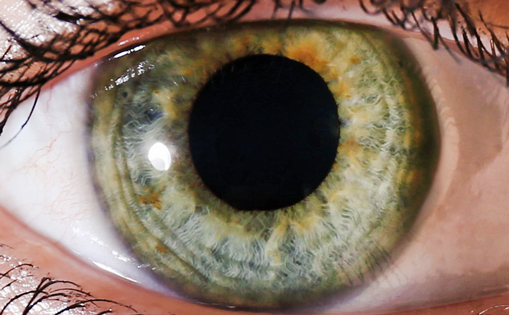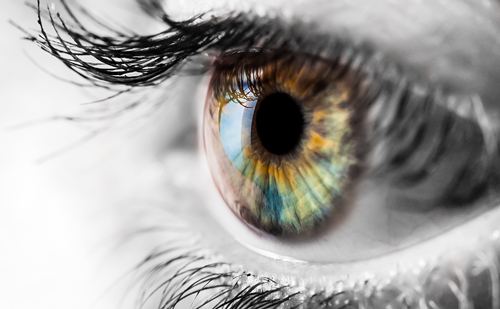Roughly 250 years after Tadini1 proposed the use of a high-diopter lens implanted into the eye to remedy aphakia, his ideas have been realised imany variations. Intraocular lenses (IOLs), first implanted by Ridley2 in 1949, have become indispensable in the treatment of cataract or very high myopia. Today’s surgeons have myriad lenses to choose from:
• monofocal;
• aspherical;
• refractive multifocal and diffractive multifocal IOLs (mIOLs);
• lenses with square or round optics edges;
• IOLs with two, three or four haptics or a plate haptic;
Roughly 250 years after Tadini1 proposed the use of a high-diopter lens implanted into the eye to remedy aphakia, his ideas have been realised imany variations. Intraocular lenses (IOLs), first implanted by Ridley2 in 1949, have become indispensable in the treatment of cataract or very high myopia. Today’s surgeons have myriad lenses to choose from:
• monofocal;
• aspherical;
• refractive multifocal and diffractive multifocal IOLs (mIOLs);
• lenses with square or round optics edges;
• IOLs with two, three or four haptics or a plate haptic;
• hydrophilic, hydrophobic or silicon lens materials; and
• fully transparent lenses and lenses with ultraviolet (UV) and even blue blocking filters.
Each of these choices will have an influence on the post-operative wavefront result and will be discussed in the following article.
Emergence of Wavefronts
The concept of wavefronts refers to waves of light like flat waves on a surface of water. A perfect lens will transform these flat waves into spherical waves with a centre in the focal point, and vice versa. An imperfect lens, on the other hand, will distort these wave patterns and superimpose distortions on these perfect patterns. These distortions are called the wavefront aberrations of the optical system. In order to measure wavefront aberrations in the eye, devices called aberrometers have been developed that use the above principle to quantify the ocular optical distortions. Many different types of aberrometers exist; the most common is the Hartmann-Shack method.3 Comparisons between the different methods and devices have been described in the literature.4,5 Wavefront aberrations are usually well explained within the context of refractive surgery, but remain largely unknown in other fields of ophthalmology because until recently there was no apparent need for it. However, cataract patients have become more demanding and are less willing to accept any post-operative spectacle correction, either for reading or for ametropia. This result can be achieved by a rigorous pre-operative biometry of the cornea, the anterior chamber and the eye as a whole, as well as the implantation of an IOL that remains immobile within the eye after implantation. Only a limited number of IOLs are on the market that can claim such a stable result. However, even with a stable IOL the need to educate the patient about a realistic outcome of the surgery is not eliminated. As an important part of the ocular optics is replaced during the cataract procedure, pre-operative aberrometry is perceived as not being very useful. Wavefront measurements come into play only to evaluate the result after the operation has been performed.
Separation of Corneal and Lenticular Aberrations
From a corneal surface map, as measured with a corneal topographer, it is possible to derive the optical aberrations induced by the anterior corneal surface. This offers a good approximation of the total corneal aberrations for most purposes, although it does not include the corneal refractive index distribution or the posterior corneal surface. By subtracting these anterior corneal aberrations from the total ocular aberrations, one can obtain an estimate of the aberrations caused by the internal structures of the eye (i.e. posterior corneal surface and lens).6 Using such a method, a delicate balance between the corneal and lenticular aberrations was found in young eyes; however, a gradual imbalance will be induced with age.7 Anterior corneal aberrations appear to remain more or less stable in time, while internal aberrations deteriorate. This was the first description of how presbyopia occurs with reference to wavefront, yielding important clues as to what degree of lenticular aberrations may be important for cataract surgeons. Little by little it became evident that presbyopia is partially caused by a change in sign of the total spherical aberrations from negative to positive. As a result, the first aspheric IOLs (with additional negative spherical aberrations) were introduced based on the hypothesis that simulating the crystalline lens of a young subject might prove beneficial for the postoperative wavefront result.8 However, these benefits are still under debate as, even though the amount of spherical aberrations reduced considerably in eyes implanted with aspheric IOLs, so did the depth of focus,9,10 making these eyes more sensitive to the effects of slight ametropic shifts. On the other hand, the influence of aspherical IOLs on the contrast sensitivity, is less clear, as the literature describes either improvement in mesopic contrast sensitivity11,12 or no difference in contrast sensitivity in general13,14 compared with regular spherical IOLs. Another approach is the use of spherical aberration-free IOLs, which have recently entered the market, but as yet only limited post-operative results are available for these lenses. It has also been shown15 that the cataract operation itself modifies the corneal aberrations and that there is a direct relationship between the size of the incision and the amount of residual astigmatism.16 This has led to foldable and injectable IOLs that require much smaller corneal incisions. Currently, there are microincision IOLs on the market that require incisions of less than 2mm, which reduces the amount of induced astigmatism even further.17
Multifocal and Accommodative Intraocular Lenses
One of the biggest disadvantages of the classic monofocal IOLs is the postoperative loss of accommodation, for which many different solutions have been proposed. These solutions can be divided into accommodative and multifocal IOLs (mIOLs). In the former a refraction change is achieved by means of a structural deformation of the lens resulting from an applied mechanical force. The latter type, on the other hand, has an optic that is divided into a number of annular zones. As the pupil size is generally smaller for near vision than for far vision, a selection between the reading correction and the distance correction can be easily made by means of the pupil size. To date, there have been three methods of achieving such multifocality: aspheric mIOL, with smooth transitions between the different refractive zones –the optical zone does not produce glare, but may give lower contrast sensitivity;18 refractive mIOL, with sharp transitions between the different optical zones; and diffractive mIOLs, which use Fresnel zones to create a transition in refraction, which has the advantage that these lenses can be made flatter than refractive mIOLs (and hence need a smaller incision). As these Fresnel zones are essentially concentric prisms, this may increase glare and reduce contrast sensitivity. However, these effects can be minimised by means of a smoothing procedure called apodisation, as is the case in the Alcon Restor IOL.19 In all these mIOLs, various degrees of higher-order spherical aberrations are induced to maximise the depth of focus, resulting in a form of pseudo-accommodation that depends mostly on the pupil size.20 Overall, very positive patient outcome studies have been published, with high degrees of post-operative spectacle independence, provided the lens was properly centred with respect to the pupil. This is mainly the case for diffractive mIOLs, such as the Acri.Tec Acri.Twin21 and the Alcon Restor. One potential disadvantage of these refractive and diffractive mIOLs is that as the discrete optical zones work as a number of concentrically placed ringshaped lenses, ultra-high-order aberrations may arise, the geometry of which is beyond the measuring capability of any aberrometer available today.22 Theoretically, this problem is rather limited in perfectly centred mIOLs, but in cases of tilting ultra-high orders of coma may emerge, causing high glare and loss of contrast sensitivity. However, it is still too early to estimate the importance of these induced ‘microaberrations’ as results on their scale and impact on the visual experience of patients have yet to be published in the literature.
Limits to Intraocular Aberration Correction
By far the most important limitation on the performance of an IOL is that it is designed for the ideal circumstances found in optical benches, or optical design software that can approximate the physiological circumstances in which the IOL has to function, but not duplicate them. After the phaco-emulsification and the removal of the lens material, there are always some leftover lens epithelial cells on the capsular bag. Over time these cells may proliferate into clusters or transform into fibrous tissue that will contract the capsular bag in which the IOL resides. These kind of violent processes will cause the lens to tilt or displace either along the optical axis or perpendicular to it, resulting in an undesired refraction change. Glare levels will also be adversely affected due to scattering by the newly formed cell clusters on the posterior capsule. The only remedy against this posterior capsule opacification (PCO) is the use of a neodymium yttrium aluminium garnet (Nd:YAG) laser to perform a capsulotomy in order to reposition the lens to a more favourable position. However, as the changes in the capsular bag during and after capsulotomy cannot be predicted, the final position of the IOL is not necessarily the optimal one. With the ever-increasing optical complexity of IOLs, from spherical monofocal lenses to diffractive multifocal lenses, the need for accurate IOL positioning has also increased. For this purpose new tools – such as improved mathematical eye models23 and centration aids – need to be used. Also needed are new IOL haptic designs that ensure a long-lasting stability of the lens. This last matter was addressed in the development of the bag-in-the-lens IOL (Morcher, type 89A), which requires both an anterior and a posterior rhexis in the capsular bag. Both rhexes are placed between the two specially designed oval haptics, similar to the way in which a bicycle tyre is placed in the rim of a wheel. For this IOL it has been shown that PCO will occur only in areas away from the visual axis24 and that it has a very good translation stability in the post-operative period of five weeks and six months.25 IOL design needs to address other limitations26 on visual performance such as average pupil size, the variations in corneal spherical aberrations between eyes and whether or not the patient still wishes to wear glasses after the procedure. As every eye is as unique in terms of its intrinsic wavefront aberrations, the ultimate goal would be to fine-tune the IOL surface to obtain a customised wavefront-corrected IOL in which the first three Zernike orders and the spherical aberration are corrected. These lenses have the potential to improve visual performance considerably,27 but still face the difficulty that only one set of aberrations can be corrected: for near, far or intermediate vision. Finding the right balance among these three sets will be the key to achieving ‘IOL supervision’.










